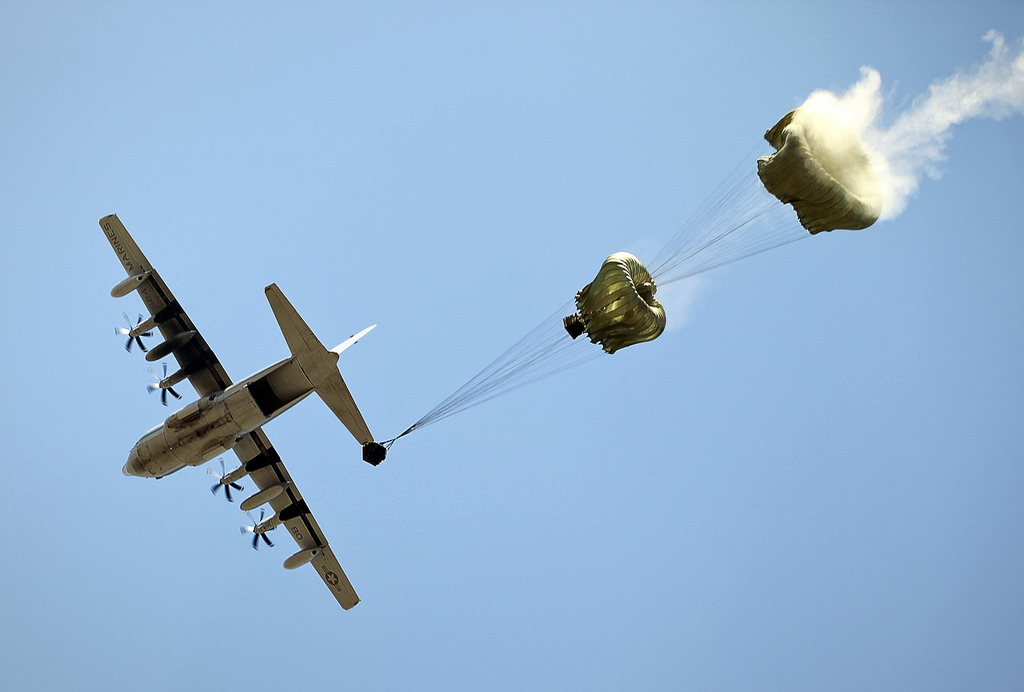This post is also available in:
 עברית (Hebrew)
עברית (Hebrew)
By Arie Egozi
It may look a simple mission but it isn’t. Some of the weapons and ammunition that were airdropped by the coalition aircraft fighting ISIS in Iraq and Syria missed the planned drop zones and fell directly to the hands of the terrorist organization.
This did not surprise the experts. The precise airdropping of supplies has always been a challenge.
While high-altitude airdrops often miss the target, low-level paradrops face significant dangers from enemy fire, and reduce delivery range.
In recent years, technology helps solve the problem – GPS-guidance systems that enable precision weapons to hit the target with super accuracy, coupled with software that acts as a flight control system for parachutes, are supposed to do the job.
The Israeli Air Force (IAF) plays a major role in the operations of the Israeli Defence Forces (IDF) Depth Command, and its C-130 H’s and J’s have, among other missions, to supply the long range ground forces with ammunition, food and water. Last year, the IAF has initiated the testing of a GPS-based system that can bring a ton of cargo hanging from a parachute to 150 meters only from the designated drop zone.
The IAF’s flight test center has conducted the testing of a system that allows to know the exact position of the dropped cargo and, in addition, enables to control its descent.
According to the IAF, the system will allow high altitude airdrops from ranges that will decrease the danger to the cargo aircraft.
The ability to perform precise airdrops in minimum risk to the aircraft is a crucial operational capability, and the IAF is developing the tools for it.


























